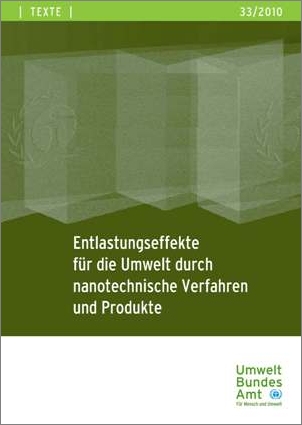Environmental Relief Effects through Nanotechnological Processes and Products
The top priority of the research project “Environmental Relief Effects through Nanotechnological Processes and Products” was to identify and quantify, to the extent possible and by means of selected examples, the environmental and sustainability opportunities and risks associated with this rapidly developing line of technology. Environmental relief potentials are understood here to include not only environmental engineering in the narrower sense (end-of-pipe technologies), but also and specifically process, production, and product-integrated environmental protection. The project consisted of four stages:
1. Analysis of products and processes already on the market or soon to be made available and application
2. Examination and initial qualitative assessment of each of the products and processes with respect to its potential for environmental relief (or burden, as the case may be)
3. In-depth life cycle analysis and assessment of four selected processes or products as compared to conventional processes or products (Manufacture of solderable surface finishes on printed circuit boards, MW carbon nanotube application for foils in the semiconductor industry, Lithium batteries for energy, storage, Ultradur® High Speed plastic)
4. An appraisal of nanotechnology employment effects.
link to publication



